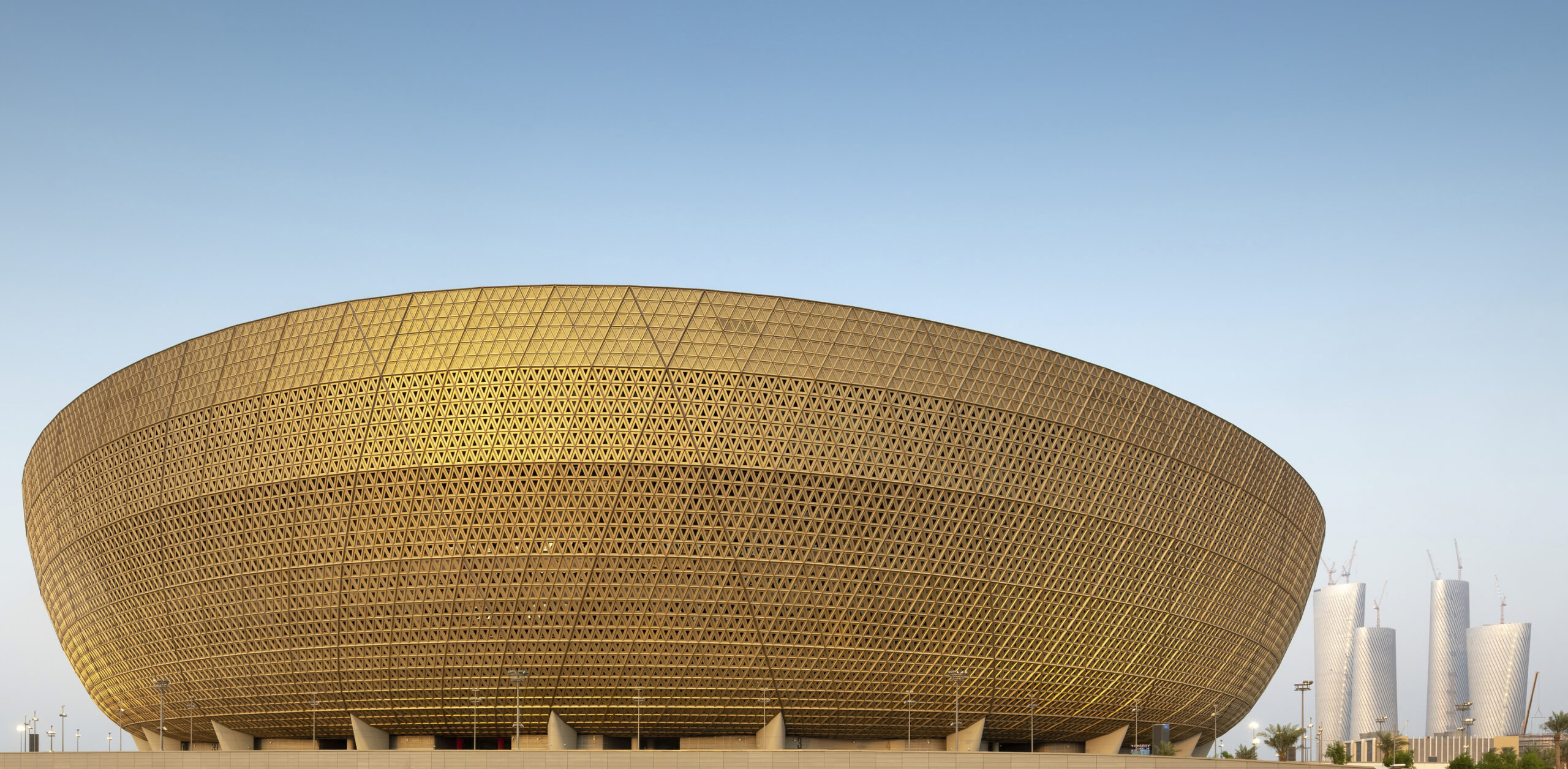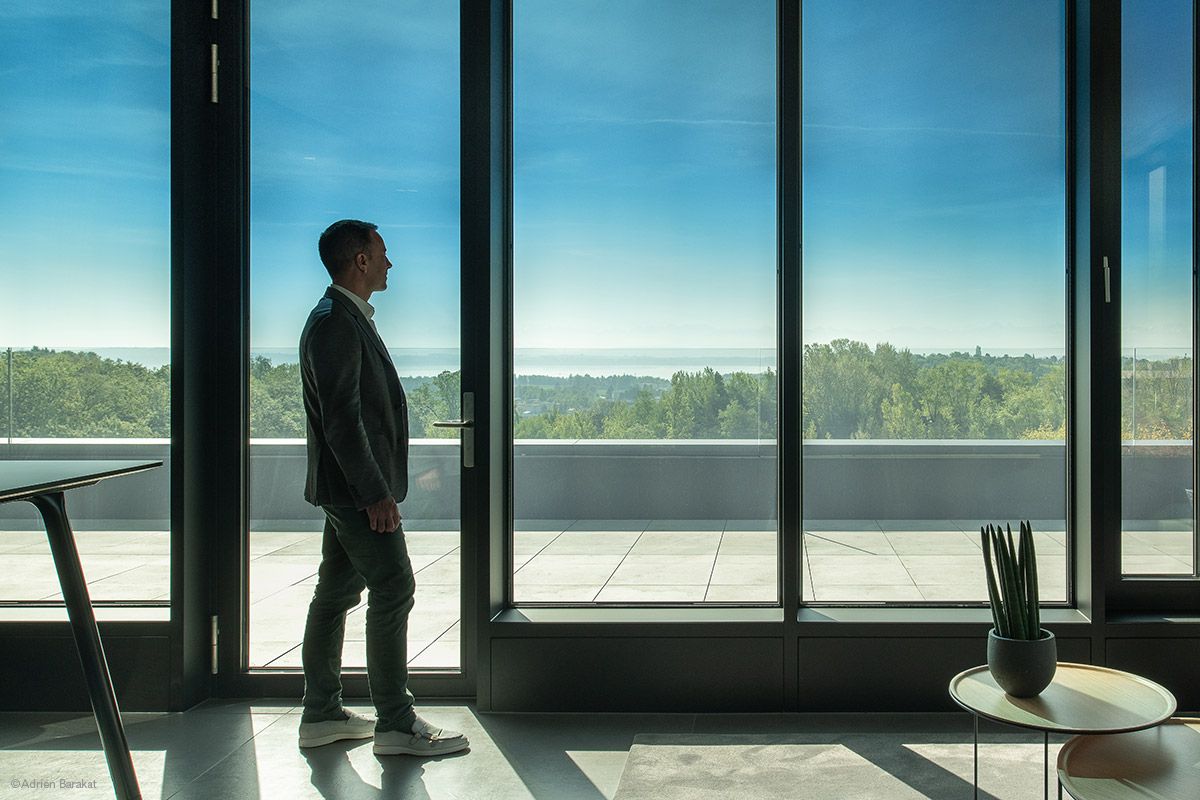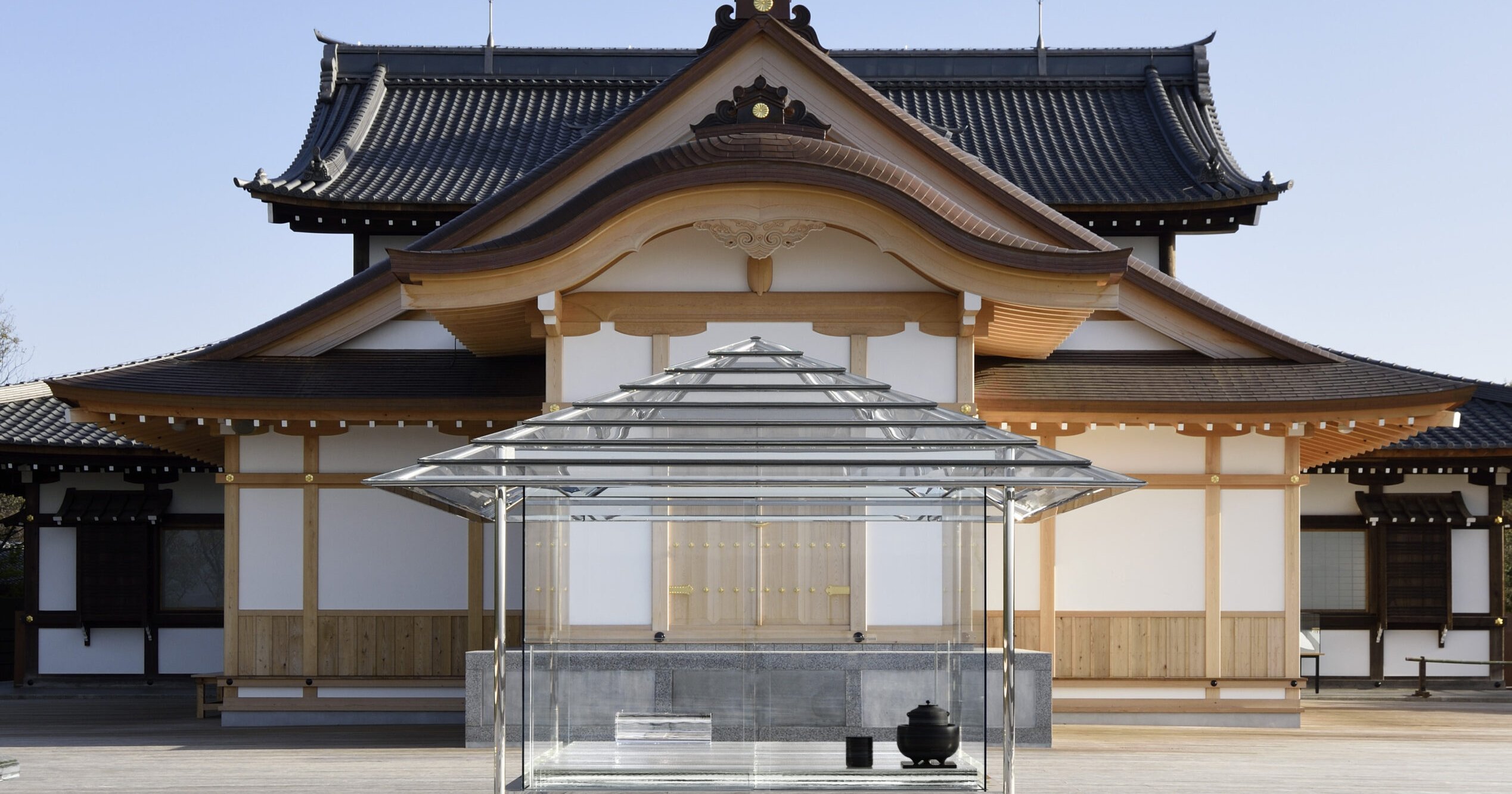The latest edition of “Architizer: The World’s Best Architecture” — a stunning, hardbound book celebrating the most inspiring contemporary architecture from around the globe — is now available for pre-order. Secure your copy today.
As the architectural profession grapples with its historical complicity in the climate crisis, designers and users alike are transforming expectations for what buildings are and can do. Issues related to the unsustainable nature of the industry and the need for more holistic approaches to design have long been on the radar of Foster + Partners, informing their work for over five decades. More recently, the firm has published a Sustainability Manifesto and introduced a Sustainability Team to collaborate throughout the design process. Their innovative evaluation methodology was designed to quantify the total carbon emissions produced over a project’s typical lifespan, including design and construction stages and future refurbishment; it can also monitor operational carbon emissions throughout a building’s lifespan, enabling the firm to make judgments to reduce carbon emissions early in the design process.
With high-visibility showcase projects like the Lusail Stadium, which received five stars in the Global Sustainability Assessment System and was built for the 2022 World Cup in Qatar, the firm has become an industry leader in building with the planet in mind. Meanwhile, their recent work on Ombú in Madrid pushed the bounds of how we conceptualize adaptive reuse, envisioning a building that would remain flexible for future social changes while revitalizing and re-greening a former industrial area.
For all of these reasons and more, Foster + Partners was awarded Architizer’s Sustainability in Design Award at the 11th Annual A+Awards gala in Paris, an honored accepted by Lord Norman Foster himself on behalf of the global team. As Architizer’s Editor-in-Chief noted, “For Foster + Partners, sustainability is not just a trend — instead, it’s been integral to the firm’s work for decades. It is rare for a firm of this scale to dedicate so much of their practice to reaching ambitious environmental goals.” To further celebrate this honor, Architizer was thrilled to interview Lord Norman Foster.

HongKong Shanghai Bank HQ by Foster + Partners, Hong Kong (1986)
Tell us a little about your story — how did you get started? How did your firm grow?
My awareness of architecture started when I left school at sixteen to start work as a junior clerk in Manchester Town Hall — a Victorian gothic-style masterpiece by Alfred Waterhouse. I was fascinated by buildings and would spend my lunch hours exploring the outstanding works and arcades of the city -old and new. Five years later, after leaving Manchester for two years of National Service as a radar technician in the Royal Air Force, I reassessed my future. Through my local library, in exploring the world of buildings, I discovered the works and writings of architects like Le Corbusier and Frank Lloyd Wright. After some research, I found my way into an architect’s office as an assistant to the Contracts Manager by trading on my past experience in Manchester Town Hall.
There, I discovered the world of architectural education and the need to have a portfolio of work to gain entry to a school of architecture. I did this by copying line perspective drawings from the office and painting in gouache at home after the style of Lowry, who was, and still is, one of my favorite artists. I applied to the School of Architecture at Manchester University, but because I had left school at sixteen, I did not have the necessary qualifications for the degree course. The problem was solved by the Head of the School, who offered me the same course, but in the end, I would receive a Diploma instead of a degree. Whilst graduating from Manchester, I was awarded the Henry Fellowship for the Masters Course at Yale University. A fellow student was Richard Rogers, and we teamed up on projects together. After working and traveling to the West Coast, I came back to the UK in 1963 to establish Team **4** with two architect sisters (Wendy Cheesman and Georgie Walton) and Richard Rogers. Four years later, Foster Associates was formed by Wendy (now Foster) and I.
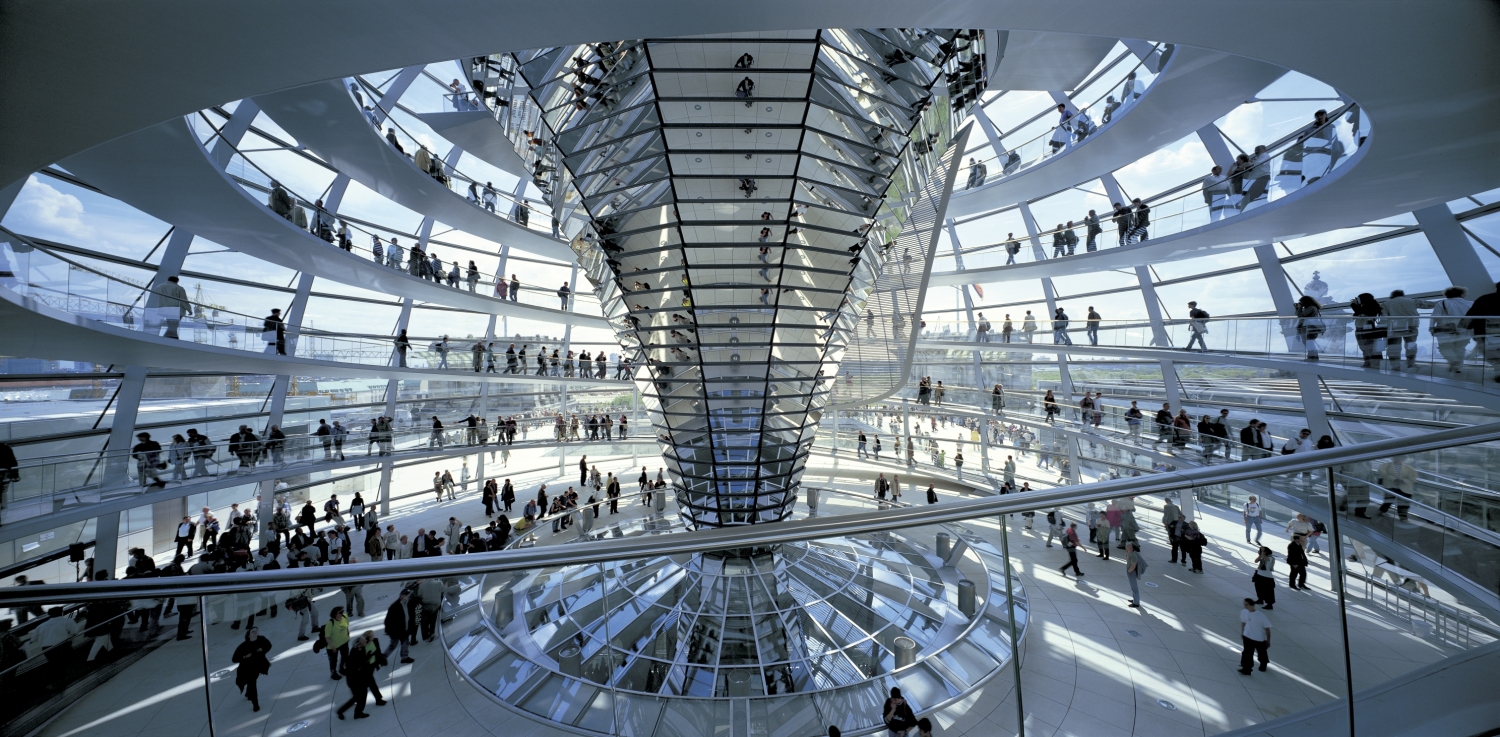
Reichstag, New German Parliament by Foster + Partners, Berlin, Germany (1999)
From the beginning it established a multi-disciplinary approach to design, bringing together architects, structural and environmental engineers with cost planners. One of the first commissions was by a Norwegian shipowner for a project in Millwall Dock that led to our opening a studio in Oslo. Over time, the practice has grown, and I have restructured it along the way but the emphasis on bringing together different disciplines and flourishing in many diverse locations around the world has been a constant. To maintain the personal element of smaller groups, there are currently 6 studios and 15 separate groups providing specialist advice, services and research.
Looking back, which of your projects do you feel was the most significant to the firm’s development and why? [You can pick more than one!]
The first project, an Operations and Amenity Centre for the Fred Olsen shipping line, was socially and technologically radical. Although, modestly scaled, it led to important early commissions such as the IBM Pilot Head Office, the Willis Faber headquarters and the Sainsbury Centre for Visual Arts. Other significant projects would be the Hong Kong and Shanghai Bank and the Reichstag. The bank was a virtual reinvention of the office tower by removing the traditional central core. The Reichstag, aside from changing the traditional relationship between the public and politicians to create a civic destination at the roof level, was also an early manifesto for green energy with an almost zero carbon footprint. Finally, Stansted, our first of many airports, reinvented the design of terminals by its generous use of natural top light and under-concourse servicing.
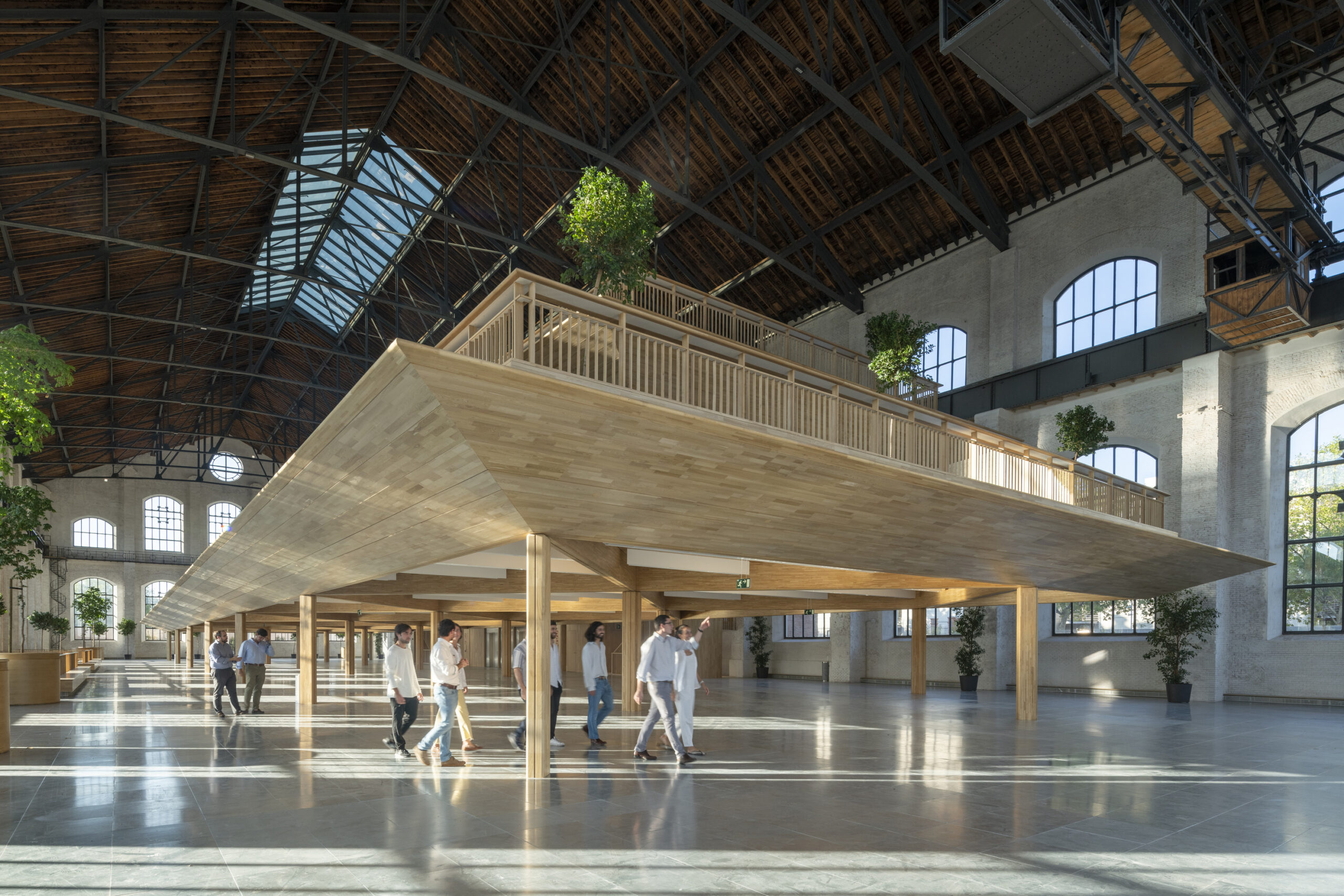
Ombú by Foster + Partners, Madrid, Spain (2022)
How is sustainability embedded within the culture of your practice?
For me, sustainability has never been a matter of fashion but is a consistent principle. It means the same to me today as it did so many decades ago — my passion for the subject started in the nineteen sixties. The difference between now and then is that many of the principles that guided me as a designer in the past were intuitive, whereas now they have been scientifically proven. For example, the fragility of the planet was alluded to by writers like Rachel Carson (“Silent Spring”) and Buckminster Fuller (“Manual for Spaceship Earth”). This awareness was confined to the fringes of our society (Stuart Brand’s “Whole Earth Catalogue” and the Hippy movement).
Today it has become mainstream, and the threat of climate change is a dominant global concern with overwhelming scientific evidence. Similarly, I was, through project designs, promoting the importance of natural light and views as well as buildings that could breathe and work with nature. The motives were to create a better and more productive workplace with an improved lifestyle as well as energy savings. Decades later, these intuitions have since been proven scientifically in one of the latest and most comprehensive studies by the Harvard School of Public Health (2016) which quantifies the benefits of green buildings with natural ventilation best exemplified in the early 1970’s by the Sainsbury Centre for Visual Arts and, at larger scale, by our recent projects such as Bloomberg in London and Apple in California.
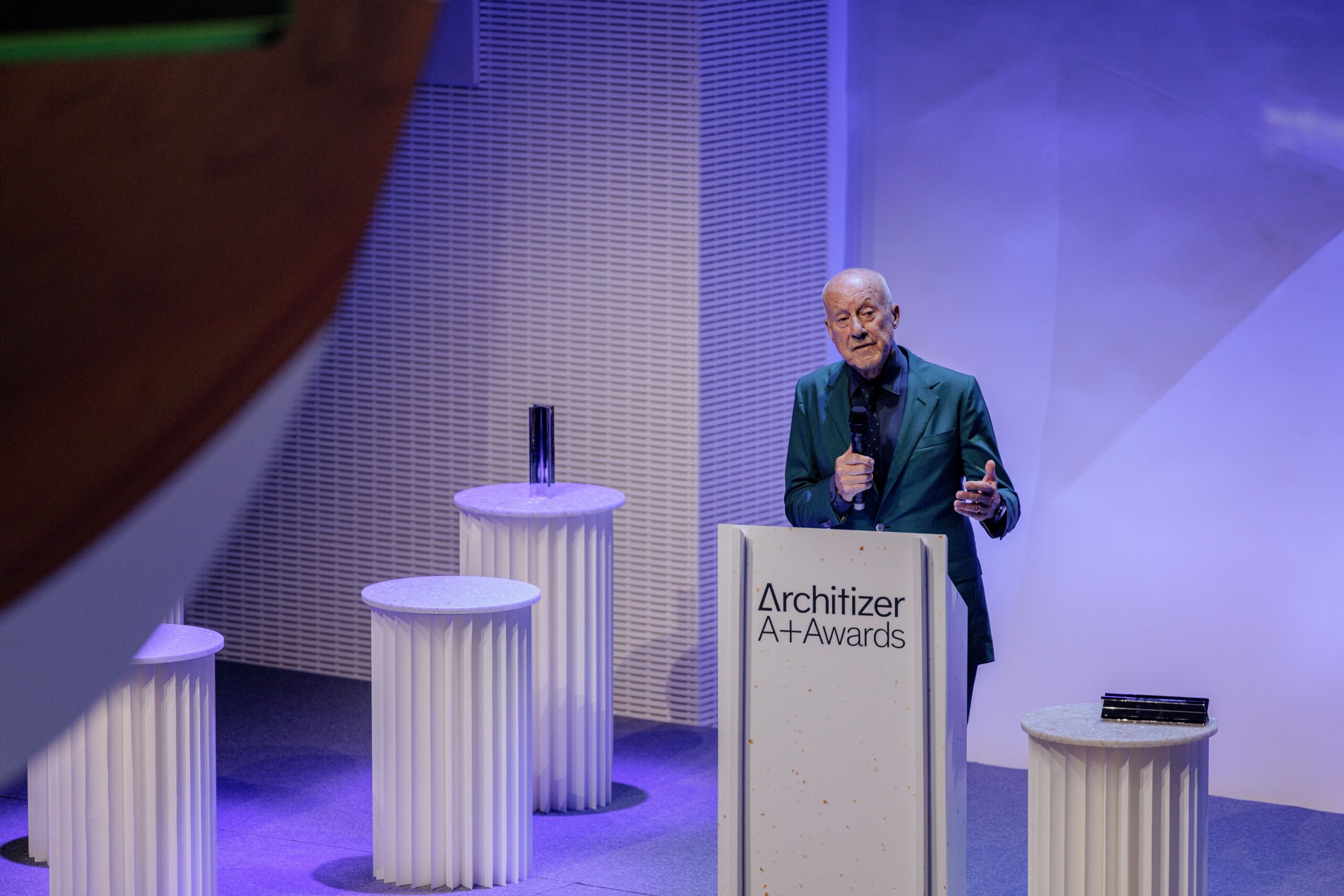
Lord Norman Foster addresses the attendees at Architizer’s 11th Annual A+Awards gala in Paris. Image via ©Alex Bonnemaison
The practice today has specialist in-house teams for carbon impact assessments, environmental analysis, materials research, landscape and workplace design, and environmental and structural engineering. Together with the design teams, they develop sustainable frameworks for our work that often go beyond the current standards.
What does winning Architizer’s Sustainability in Design Award mean to you and the firm?
It is a great honor and a recognition for the tireless work of every individual in the practice over the past five decades.
If you had one piece of advice on sustainable design to offer the next generation of architects, what would it be?
Stay a student — remain curious, be a good listener and feel free to challenge.
Top image: Lusail Stadium by Foster + Partners, Lusail, Qatar; Social media preview via ©Alex Bonnemaison
The latest edition of “Architizer: The World’s Best Architecture” — a stunning, hardbound book celebrating the most inspiring contemporary architecture from around the globe — is now available for pre-order. Secure your copy today.
